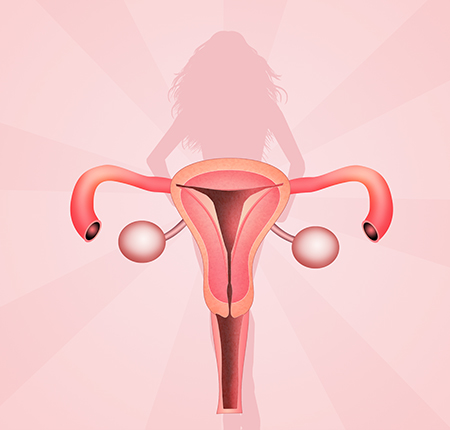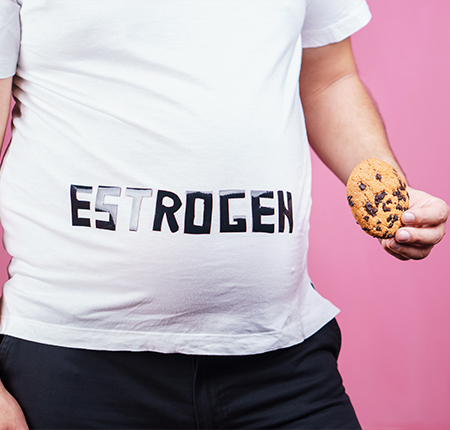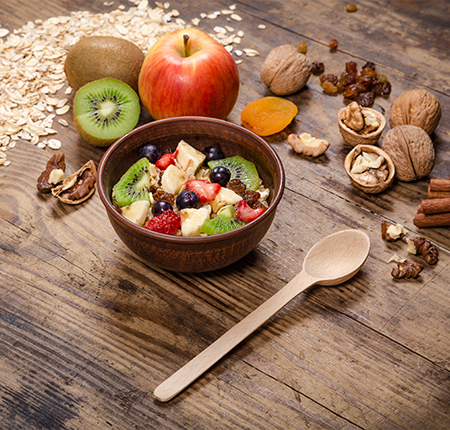
We know it, and so do you: estrogen is one of the main hormones responsible for your menstrual cycle and reproductive health. It is called a female hormone precisely because of the impact it has on your sexual development. I told you more about how it is produced and what its role is HERE .
The fact that estrogen levels fluctuate periodically throughout the month is completely normal, and plays a crucial role in the regularity of your periods.
But sometimes, it happens that it falls below the optimal level not naturally, but as a result of some conditions or changes in your life. Obviously, then there is an imbalance. So let's look at the functions of estrogen, the reasons why it can decrease, the symptoms that appear and what to do in such situations.

Functions of estrogen
In addition to the hormone function that contributes to the health of organs and reproductive processes, estrogen also has other important roles in both women and men:
Supports bone and cardiovascular health
Contributes to brain health
It affects mood
Keeps skin healthy
In women
In the case of women, the regulation of the menstrual cycle and the development of secondary sexual characteristics are especially processes in which estrogen plays an essential role. Additionally, it:
In men
Even though we call it a female hormone because most of it is produced in the ovaries, estrogen is not only found in women's bodies. In addition to large amounts of testosterone, men's bodies also produce certain (smaller) amounts of estrogen in the testicles and brain.
And in their case, it has an important function in the development of secondary sexual characteristics and reproductive function, estrogen being also in the seminal fluid. So in men, estrogen:
Stimulates facial and body hair growth
Contributes to the thickening of the voice
Supports the development of muscle mass
It affects the level of cholesterol in the blood
It maintains the balance of the nervous system and emotional states
It is important, however, that the hormone is produced in healthy amounts, as an increased level of estrogen in the male body can be harmful.

Types of estrogen
The human body naturally produces three types of estrogen. Each type corresponds to a certain stage in life and is produced in greater or lesser amounts depending on factors such as age and health.
Estradiol
The ovaries are the main organs that secrete estradiol, the strongest type of estrogen, produced in the largest amount throughout reproductive life. Your body produces estradiol until your last period, and its role is to regulate the menstrual cycle and support the development of female sexual characteristics.
Estriol
Pregnancy estrogen, or estriol, is what the body produces during pregnancy to support the health of the uterus and baby. It is the weakest type of natural estrogen and, outside of pregnancy, is almost undetectable in the body. It also has the role of protecting your vaginal health and reducing the risk of breast cancer.
estrone
Estrone is the only type of estrogen that the body produces with the onset of menopause, at the level of adipose tissue. This too helps to maintain a healthy bone system, but it can also cause irregular bleeding, fatigue, insomnia and mood swings.
Optimal estrogen level
The concentration of estrogen in the body is measured in picograms per milliliter (pc/ml) and can vary greatly from person to person. Factors such as age, gender and, in the case of women, the phases of the menstrual cycle must be taken into account to determine what constitutes an optimal level of estrogen.
Optimal values for women
In non-pregnant women who are in their reproductive years (ie still menstruating), the ideal level is generally between 30 pg/ml and 400 pg/ml.
Of course, your doctor can tell you exactly what level is optimal for you, taking into account all your medical history and the treatments you are taking. But here are some benchmarks that you may find useful:
- below 10 pg/ml before puberty
- 20 pg/ml - 400 pg/ml during puberty
- 15 pg/ml - 350 pg/ml during the menstrual cycle
- up to 100,000 pg/ml during pregnancy in the 3rd trimester
Optimal values for men
For men, the reference values are much lower. And for them, the conditions they suffer from and the treatments they follow, as appropriate, will be taken into account. But in general, an optimal level for adults means between 10 pg/ml and 40 pg/ml.
Symptoms of low estrogen
During each menstrual cycle, estrogen fluctuates - this is normal. It begins to increase with the end of menstruation, reaches its maximum level at ovulation, after which it decreases. It increases again during the luteal phase, and decreases the most during menstruation. It also drops drastically at menopause.
But if estrogen levels are low for long periods of time, even when they should theoretically be rising, it may be masking a more serious health problem and requires medical attention.
Some of the most common signs of low estrogen in women are:
Low or non-existent sexual appetite
Hot flashes
Irregular periods
Insomniacs
Mood swings
Vaginal dryness
Difficulty concentrating
Causes of low estrogen
We have already talked about the natural causes of a low estrogen level above. Estrogen drops after ovulation and at menstruation, as well as at menopause because the ovaries produce smaller and smaller amounts until they stop altogether.
But there are other reasons why estrogen can drop suddenly. These include:
Foods that boost estrogen levels
One of the easiest ways to boost estrogen levels is through diet.
But before we talk about foods rich in estrogen, we mention that the recommendation of the specialist doctor is the most important. Studies on the effectiveness of foods in increasing estrogen levels in the body naturally are limited. So always seek your doctor's advice to choose the best approach for you.
You can try to bring estrogen back to an optimal level by eating foods that contain phytoestrogens, substances that come from plants and mimic natural estrogen. It is recommended to consume about 50 mg of phytoestrogens per day.

Here are some foods that contain significant amounts of estrogen:
Fruits (berries, apples, grapes, plums, peaches, pears)
Cereals (oats, barley, wheat germ)
Nuts and seeds (flax, sesame, sunflower, almond, hazelnut)
Vegetables (broccoli, kale, spinach, onion, Brussels sprouts)
SOYBEAN
Tofu
Olive oil
Coffee
Tea
Vitamins and minerals that boost estrogen levels
If you are lacking certain nutrients in your body, these deficiencies may be the cause of your low estrogen levels. Correcting deficiencies, in this case, automatically also means stimulating normal estrogen production. So look what vitamins can help you:
Maintaining hormonal balance
The best natural estrogen is the one that a healthy body produces, which happens when you take care of your hormonal balance. Here are some of the changes with the greatest positive effect on estrogen levels and hormonal balance:
Get enough rest: Your hormones work best when you're rested, so try to get at least 7 hours of sleep a night.
Maintain a healthy body weight: Both being underweight and overweight can cause hormonal imbalances , so it's important to be at a normal weight for your age, height and activity level.
Form an active lifestyle: Excessive exercise can contribute to lower estrogen levels. Choose moderate intensity workouts.
Manage stress: You can practice breathing exercises, yoga, meditate, or create your own self-care ritual to help you calm down and reconnect with yourself.






















